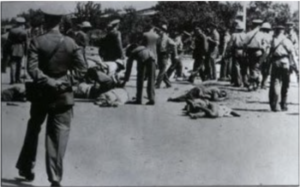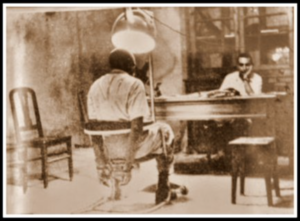
Throw It Into the Sea
In the 1940s an uncomfortable truth was emphasized by the Portuguese Labor Inspectorate in the colony of Sao Tome – the conditions of the workers on the cocoa plantations there could only be compared to slavery.
“The reality today is the following: many agriculturists of Sao Tome organize their agricultural possessions on the basis of slave labor – and there is no euphemism that would allow us to change this expression…“
The situation on the rocas, or cocoa plantations, in Sao Tome were unique. Previously uninhabited, the island had been colonized by the Portuguese since 1493. Descended from the imported laborers and the Portuguese, a class of Creole natives, called forros, had developed their own culture and creole language. Classified as black by the Portuguese, they were nevertheless a mixed-race ethnicity whose social status had allowed them to participate as roca owners in the past, but were, by the early 1900s, largely pushed out of plantation ownership.
Nevertheless, the forros as a whole felt that the manual labor on the rocas was beneath them, and to fill the labor void the Portuguese brought in other laborers from Angola and Mozambique. These non-forro laborers were referred to as “servicais“. Life for the servicais was vastly different than life for the forros. They were subject to forced labor and corporal punishment. They were often fed rotting food and scant portions. And they were acutely aware that they were at the very bottom of the social order in Sao Tome.
The changes demanded by the Labor Inspectorate in the late 1940s were slow to take hold, but the appointment of a new governor, Carlos Gorgulho, who gave unconditional support to the labor inspections, pressuring the rocas to fix their excesses. He also developed a program to allow foreign workers to go home and utilize the local forros for plantation labor.
To this end, Gorgulho’s government began to squeeze the forros with economic demands as well as periodic police raids to gather forced labor for public works projects.
By 1952 the repatriation of contract workers from other countries had created a labor crisis in Sao Tome. A plan to resettle 15,000 people from Cape Verde on the island led to a rumor circulating that land for the new settlers would be obtained by seizure from the local forros. Another rumor began to circulate, helped along by hand-drawn pamphlets, that the government was on the verge of collecting forros for forced labor on plantations, and that anyone who entered into such a contract with forro laborers would be killed.
The colonial government released an immediate statement, “The government has been informed that individuals who are hostile toward the present policy, known as communists, are spreading tendentious rumors to the effect that the Creoles are to be obliged to contract themselves for the work on the rocas like servicais. The government declares that no Creole should give credit to these rumors, but should report such individuals to the police. Thus, the government which has the obligation to protect the Creoles, as it has always demonstrated, guarantees that it will never agree to authorize such contracts.“
Although this was the government’s official statement, behind the scenes things were quite different. Gorgulho believed that a rebellion caused by communists was being planned, and colonists and administrators were urged to take up arms to protect themselves and their families. As well, some of the Cape Verde servicais as well as those from Angola and Mozambique, were armed.
When protestors appeared on 3 February 1953, the colonial apparatus was ready. It didn’t take much to trigger the first protestor’s death;Manuel de Conceicao Soares was killed on the first day.

The protests seemed to be the revolt the colonials were expecting. Within the next few days, more than 2000 forros were killed on Sao Tome, with countless others jailed and tortured with electrical prods and beatings. On one plantation, twenty forros were burned alive. In a police station, twenty-eight forros were crammed into a cell and allowed to suffocate.

Nor were all the attacks on forros carried out by the colonials; workers on some of the plantations joined in the violence.
Bodies littered the island, so much so that Governor Gorgolho gave the order to, “Throw this shit into the sea,” in order to make the death toll, which equaled about 3.33% of the population, seem less horrific.
When the killings stopped, Portugal sent a committee from the Portuguese International and State Defense Police to investigate the situation.
They found no evidence of a communist conspiracy.
In the end, Governor Gorgulho was ordered to return to Portugal, where he was promoted and feted as a hero. Seven forros were tried for the deaths of two police officers, and convicted.
Sao Tome and Principe gained independence from Portugal on 12 July 1975, and today has guarantees of human rights.
To read more about African history, please click here.
- February 3, 2021
- History , Interesting

